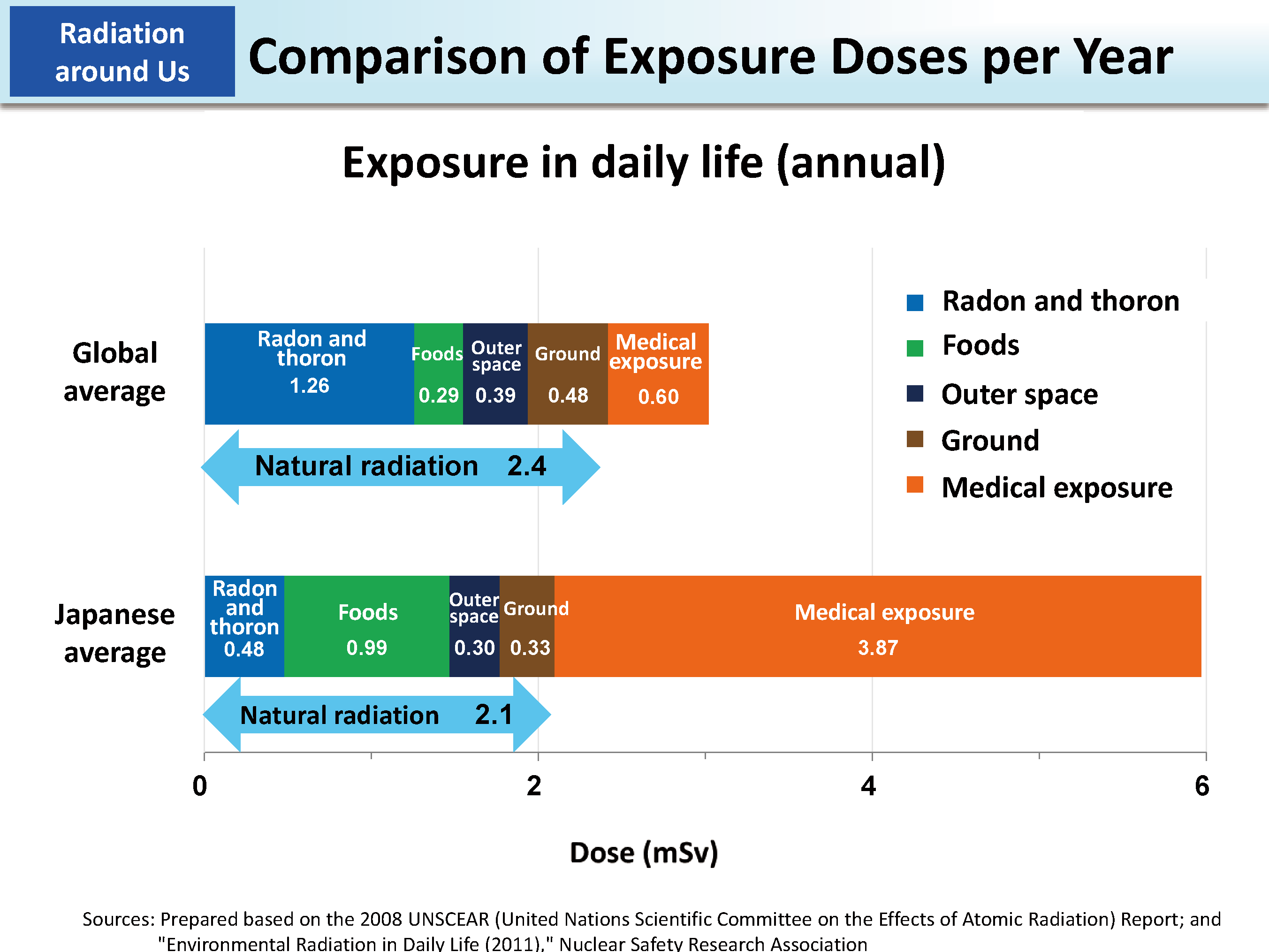Comparison of Exposure Doses per Year
In December 2011, the Nuclear Safety Research Association announced Japan's national doses for the first time in 20 years. The survey shows that the annual average dose of Japanese people is 5.98 millisieverts, of which 2.1 millisieverts are estimated to be caused by exposure to natural radiation.
Comparison with the global average shows that Japanese people's exposures to Radon-222 and Radon-220 (thoron) are relatively low while exposures from foods are relatively high. In preparing this report, it has been found that the Japanese people's exposure due to Lead-210 and Polonium-210 in foods amounts to 0.80 mSv, which is high compared to the global average, probably due to Japanese people's high intake of fish and seafood (p.66 of Vol. 1, "Breakdown of Natural Exposure Doses (Japanese)").
While exposure doses from radiological examinations vary widely among individuals, Japanese people's exposure doses are known to be significantly high on average. In particular, the widespread use of CT scans is a major contributing factor (p.76 of Vol. 1, "Radiation Doses from Medical Diagnosis").
- Included in this reference material on March 31, 2013
- Updated on March 31, 2019

